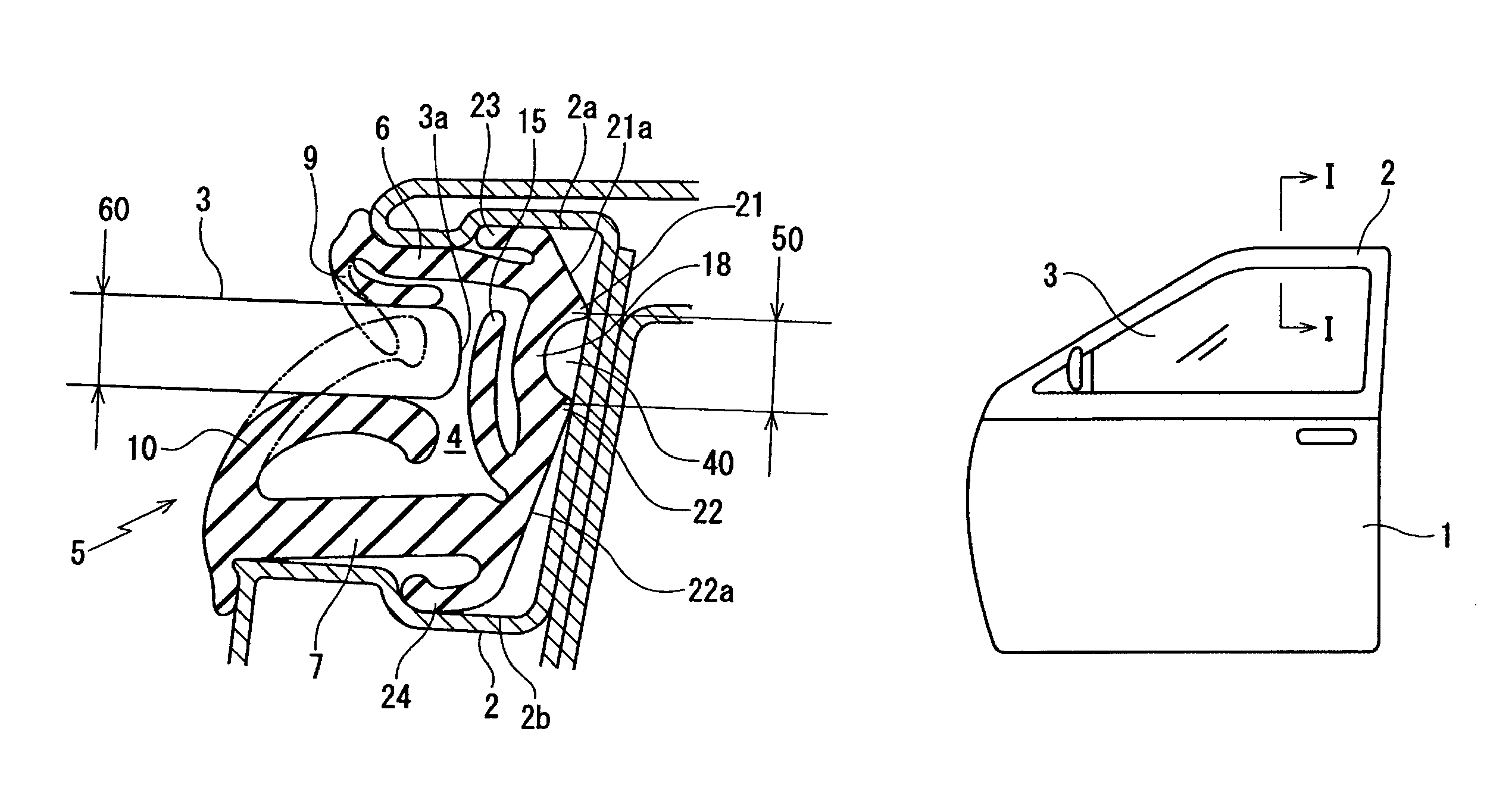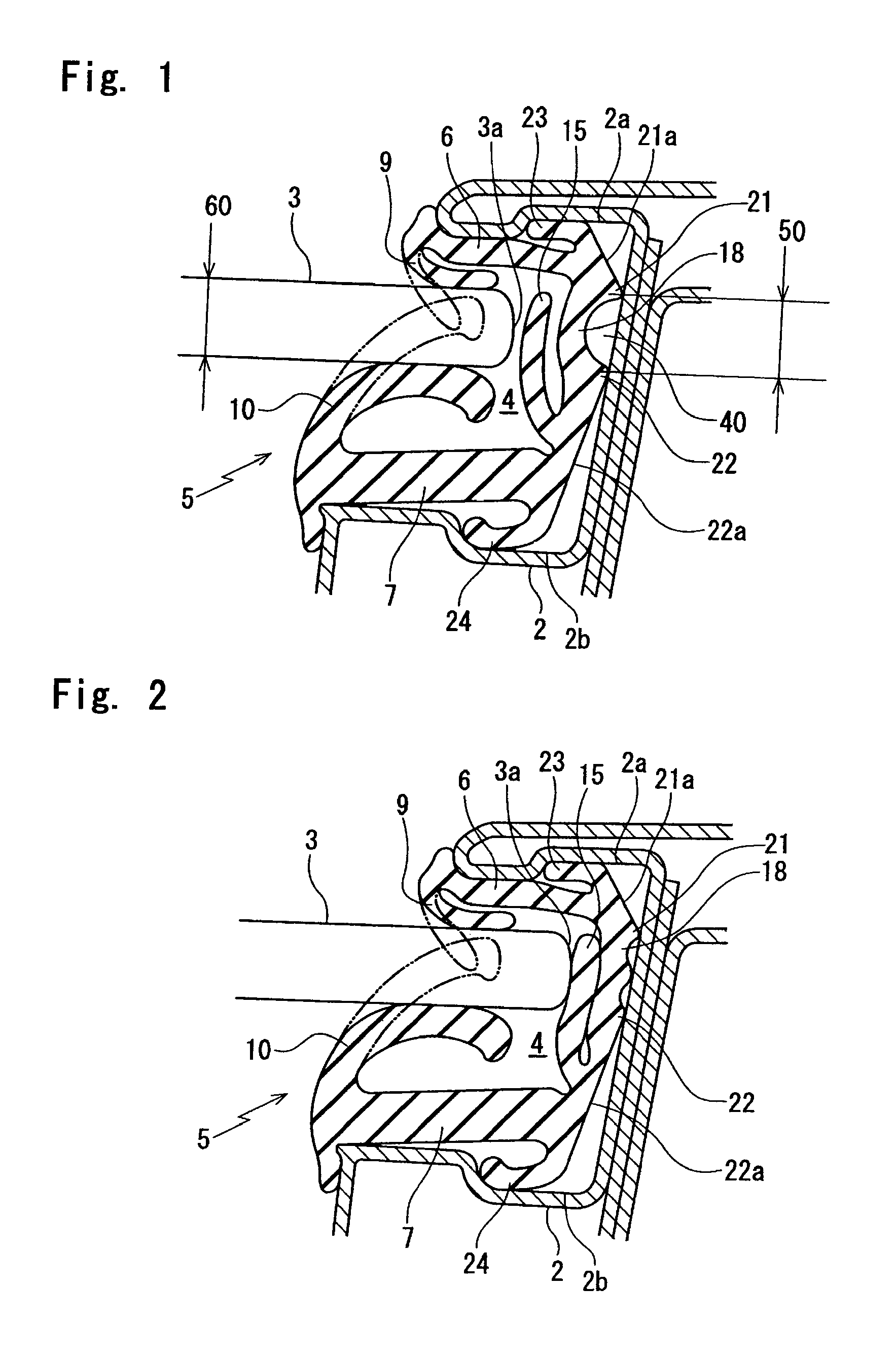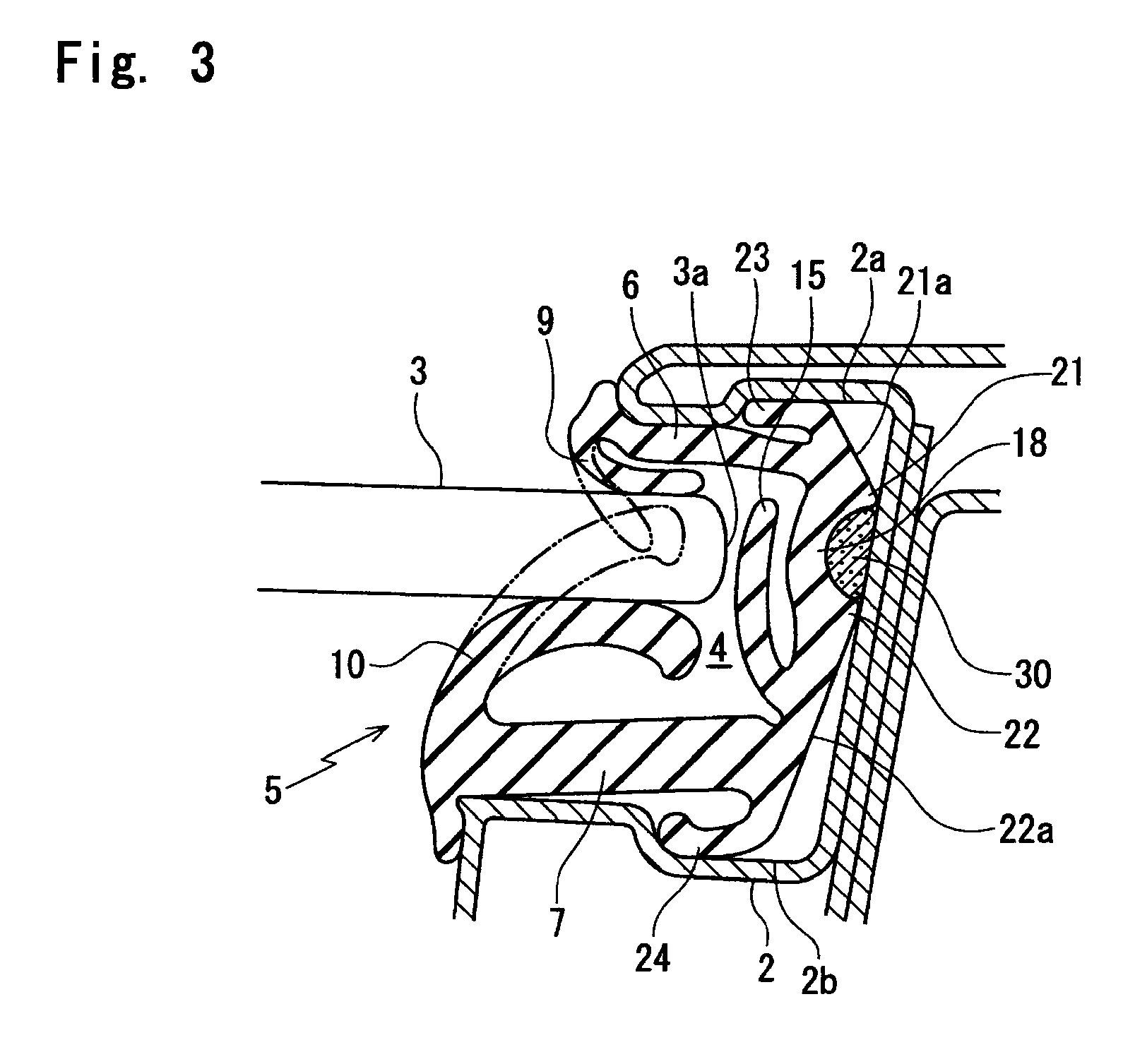Glass run
a glass run and run technology, applied in the field of glass runs, can solve the problems of b>8/b> complicating the structure, and achieve the effects of softening the impact, reducing the generation of the impact sound (bumping sound), and reducing the generation of the impact sound
- Summary
- Abstract
- Description
- Claims
- Application Information
AI Technical Summary
Benefits of technology
Problems solved by technology
Method used
Image
Examples
Embodiment Construction
[0036]Referring to drawings, embodiments of the present invention will be described. When constituents or items correspond to those in prior arts, the same symbols are used.
[0037]FIG. 1 is an enlarged cross section of a glass run according to an embodiment of the present invention and corresponds to a I-I line enlarged cross section of FIG. 6. FIG. 2 is a cross section of the glass run of FIG. 1 at a time of fully closing a door glass.
[0038]In the same manner as the prior arts, a glass run 5 according to an embodiment of the present invention is fit on a door sash 2 (or a door frame) of an automobile door 1 and guides a door glass 3 lifting or lowering into a ditch part 4.
[0039]The glass run 5 has a cross-section roughly U-shape comprising: two side walls, an outer-cabin side wall 6 and an inner-cabin side wall 7; and a connecting wall 18 which connects the outer-cabin side wall 6 and the inner-cabin side wall 7. The outer-cabin side wall 6 has an outer lip 9 formed on an inner-cabi...
PUM
 Login to View More
Login to View More Abstract
Description
Claims
Application Information
 Login to View More
Login to View More - R&D
- Intellectual Property
- Life Sciences
- Materials
- Tech Scout
- Unparalleled Data Quality
- Higher Quality Content
- 60% Fewer Hallucinations
Browse by: Latest US Patents, China's latest patents, Technical Efficacy Thesaurus, Application Domain, Technology Topic, Popular Technical Reports.
© 2025 PatSnap. All rights reserved.Legal|Privacy policy|Modern Slavery Act Transparency Statement|Sitemap|About US| Contact US: help@patsnap.com



